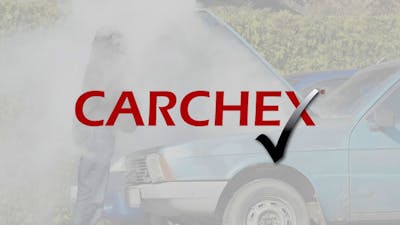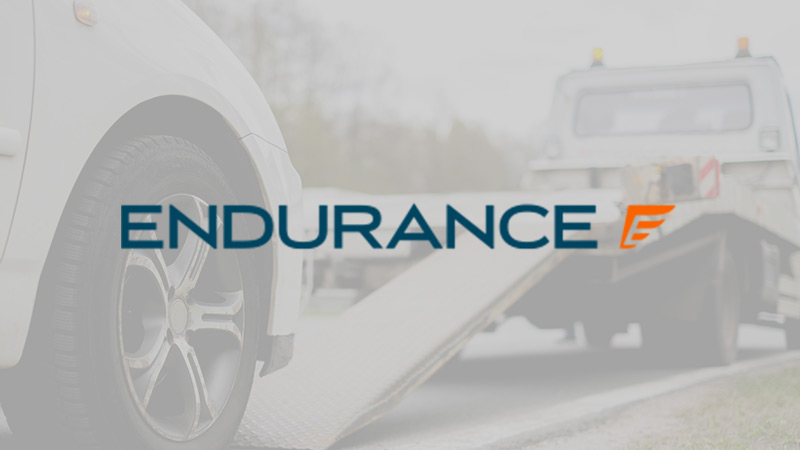What Does a Car Warranty Cover?
One of the most important financial aspects of vehicle ownership is managing unexpected repair bills. Nobody wants to deal with unplanned repair bills, and your vehicle’s warranty package can help. It is your tool to prevent unexpected repair costs during the coverage period of the warranty. But since there are often multiple warranties, it is important to know what coverage you have. Aftermarket warranties are also tempting for those with used vehicles outside of the manufacturer’s warranty period.
Popular Warranty Providers
Here is our deep dive into what warranties cover, what they don’t, and the logic behind these coverages. Warranties vary significantly from not just manufacturer to manufacturer, but even at the sub-brand level. Here is how to know what’s covered by what warranty.
Types of Warranties
Factory Warranty
The second best part of buying a brand new vehicle that you’re in love with is knowing that it’s going to be protected by a comprehensive new car warranty, at no cost to you other than the exorbitant price you just paid for the car. In general, here’s what you can expect to be covered and not covered by a new car warranty.
| Covered By A Bumper-to-Bumper Warranty | Not Covered By A Bumper-To-Bumper Warranty |
|---|
Bumper-To-Bumper Warranty
The single most valuable warranty new vehicles come with is the new car limited warranty, a.k.a., the bumper-to-bumper warranty. This is your most comprehensive warranty, and it covers all but a small handful of items on your vehicle. It is important to remember that a vehicle warranty is not a maintenance plan, nor will it cover your car’s parts that wear out during normal use. We usually point to tire wear and wiper blades as the two most obvious examples of what a new car warranty does not cover.
All of the rest is covered. If your infotainment system fails -- and studies show it is the single most likely system to fail -- you will be covered. If the engine begins to blow blue smoke out the back, you will be covered. If your EV’s electric drive motor fails, you will be covered. If the transmission decides it doesn’t like forward gears anymore, not to fear. We’ve started with the really big and scary failures to get them out of the way. Let’s look now at some more likely failures.
Alternators, starters, and AC compressors make up the bulk of the Car Talk Community’s repair discussions. These items fail and fail often. And this isn’t 1974, costs have gone up. The value of the dollar has gone down an alternator replacement that used to run $75 on your old Nova can now cost $960. We know because one of our vehicles, a Subaru Forester, required a replacement this past month and that is what the dealer charged. Before sales tax, of course.
The good news is that during your bumper-to-bumper warranty period, none of this is really your concern. The manufacturer will reimburse its dealer-partner for all the costs associated with unexpected repairs while this warranty is in effect.
| Best Brands For New Car Warranties | Basic New Vehicle Warranty | Powertrain Warranty |
|---|
The duration of this vehicle warranty can vary from three to five years and from 36,000 miles, to as many as 60,000 miles, depending upon which brand you buy. The warranty always expires at the lesser of the two events. So, if you have a 37-month-old car with just 22,000 miles, the warranty is up if it was a 3-year, 36,000-mile warranty.
That said, always - let us repeat that - always ask for a repair to be covered if the warranty has recently expired. Manufacturers all have direct helplines to allow you to plead your case. Manufacturers extend warranties quite often. Most manufacturers extended their warranties recently due to COVID-19 as a goodwill gesture. In fact, it was how our Forester’s bill was paid, despite the vehicle being past its warranty period.
| Typically Included In A Powertrain Warranty | Usually Not Included In A Powertrain Warranty* |
|---|
/*/Our chart above is what GMC includes and excludes in its Powertrain Warranty.
Powertrain Warranty
Many manufacturers add a second important warranty on top of your new car warranty. It is called the powertrain warranty. This is a warranty that drops many of the most common failure items and systems but covers what we might term, “the heavy stuff.” The guts of the engine, the transmission, and the parts like the differentials and transfer cases that help deliver power to the wheels are covered.
Like all exclusionary coverage policies, manufacturers go into fine detail regarding what is NOT covered by a powertrain warranty. And the list is a bit silly and self-serving for the manufacturer. You can’t start an engine without a starter, but it is not included. You can’t keep your engine running without an alternator, but it is not included. You can’t do much with a manual transmission without a clutch, but it is excluded. Get the picture? A powertrain warranty may help you, but the chances are what breaks won’t be on this list.
You may notice manufacturers like BMW, Mercedes-Benz, Jaguar, and Audi, and many other brands don’t even bother with a powertrain warranty. There are a couple of reasons for this. One is that many of their customers lease the vehicle as a first “owner.” So the new car warranty covers the entire typical period of a lease (39 months). After that, the car is then sold (at a massively depreciated value) to the subsequent owner, who will soon learn that to replace an alternator means the roof has to first be cut off. We are kidding (sort of).
The second reason these manufacturers ignore the powertrain warranty is that they end up selling a large percentage of their off-lease cars themselves. When they do, they include a certified pre-owned warranty with it that mimics the new car warranty for a year or more. So, it is really the sales model that is dictating this difference from the mainstream brands.
Brands that do offer very long powertrain warranties often only do so for the original owner. For example, Hyundai and Mitsubishi both offer a 10-year, 100,000-mile powertrain warranty. But it is just for the first owner. If you buy a car of this brand used, it doesn't apply.
The traditional powertrain warranty lasts five years or 60,000 miles. That is what Toyota, Honda, Subaru, and many other mainstream brands offer.
Corrosion Warranty
Back in the 1970s, kids in my age group used to love to watch the road go underneath the car by looking down at where the floor used to be before it rusted away. Dropping superballs down that hole and then looking back to see them bounce around all crazy on the highway is something we would never do (wink, wink). For much of the first century of car ownership, a car’s life was often ended by corrosion. Things have changed.
In the modern era, having a vehicle rust to the point that hole appears in the body, the unibody or the frame is almost unheard of. Almost.. In general, galvanization, much better low-VOC paints and primers, and alternative materials mean that manufacturers have fewer worries about offering a corrosion warranty to go along with the other warranty packages. Note that these warranties always include the term “outer body rust-through.” That means a big honkin rust hole where one was not intended to be, like the middle of the door, or even the lower quarter panels where EVERY vehicle is prone to rust.
The “outer body” part is important, too. All vehicles develop surface rust on the undercarriage and underneath. That is normal, and it should not impact the vehicle’s performance in any way. If your lower control arms rust out, though, that’s not part of the outer body, and it’s not covered.
When vehicles do develop severe corrosion problems, the manufacturers often step up to deal with it, regardless of the warranty. Toyota notably did this when a series of manufacturing problems caused the frames in its Tacoma and 4 Runner vehicles to literally start breaking in half. Toyota spent gazillions of dollars to have those frames replaced in two campaigns, and it occurred outside of the corrosion warranty period, even though these components weren’t part of the “outer body”. No manufacturer wants one of their models to be labeled a rust-bucket.
Emissions Warranties
We won’t spend a lot of time discussing these, but they are important to understand. Back in the 1970s, the federal government began requiring manufacturers to equip vehicles with all kinds of emissions equipment to reduce the amount of greenhouse gas emitted into the atmosphere.
What became pretty quickly evident was that (A) a lot of this stuff was prone to failure pretty quickly and (B) it was expensive to fix.
The Clean Air Act of 1970 required manufacturers of light-duty vehicles to provide two federal emission control warranties:
- "Performance Warranty"
- "Design and Defect Warranty"
These warranties protect you whether you purchased a new or a used car. The warranty period begins from the date of sale to the original owner.
The Performance Warranty covers repairs which are required during the first 2 years or 24,000 miles of vehicle use (whichever first occurs) because the vehicle failed an emission test, when required by the state for a valid inspection sticker. Specified major emission control components are covered for the first 8 years or 80,000 miles (whichever first occurs). The specified major emission control components only include the catalytic converters, the electronic emissions control unit or computer (ECU), and the onboard emissions diagnostic (OBD) device or computer.
If you are a resident of an area with an Inspection and Maintenance (I/M) program that meets federal guidelines, you are eligible for this warranty protection provided that:
- Your car or light-duty truck fails an approved emissions test; and
- Your vehicle is less than 2 years old and has less than 24,000 miles (up to 8 years/80,000 miles for certain components); and
- Your state or local government requires that you repair the vehicle; and
- The test failure does not result from misuse of the vehicle or a failure to follow the manufacturers’ written maintenance instructions; and
- You present the vehicle to a warranty-authorized manufacturer representative, along with evidence of the emission test failure, during the warranty period.
The Design and Defect warranty covers repair of emission control or emission related parts which fail to function or function improperly because of a defect in materials or workmanship for 2 years or 24,000 miles (whichever first occurs), and the specified major emissions control components mentioned above for 8 years or 80,000 miles (whichever first occurs). The manufacturer can deny this warranty coverage if evidence shows that the emission component failure was caused by improper use or maintenance and not caused by a defect.
Visit the EPA’s website for a list of these components and a description of the warranties (PDF) Note that as new technologies arrive, the list here may not be 100 percent up to date. For a more complete list, check your car’s owner's manual/warranty booklet.
Extended Warranty
Extended warranties can be a great way for some owners to help alleviate the stress of car ownership. Many of us live on a tight budget, and a multi-thousand-dollar repair is not part of that budget. So, both manufacturers and aftermarket companies like Endurance and CARCHEX offer to extend the warranties your vehicle comes with.
If you think you will be keeping a car outside of its included warranty periods, we suggest considering an extension from your brand’s manufacturer first. This has the advantage of allowing you to have all the repairs done by the dealer. You will usually need to purchase this before the new car warranty expires to be eligible.
Outside of that period, the aftermarket companies come in. They can sell you whatever type of warranty you wish to buy. Our advice is to either go all in or to skip the aftermarket warranty. As we said previously, it isn’t the engine or transmission that is most likely to fail in your vehicle. Things like the infotainment system, alternator, and AC compressor are most likely to sting you, and an aftermarket warranty that excludes them seems like a bad bet to us.
Benefits Of An Aftermarket Extended Warranty
There are some perks to owning an aftermarket extended warranty. They typically include roadside assistance, so you may not need to pay for a AAA membership. They also are transferable in many cases, so your used car now becomes a bit more desirable on the open market if you wish to sell it. And most can also be canceled with a prorated rebate if you decide to trade the car in. When shopping for an extended warranty these are things we would want to be sure were included.
Fast Extended Warranty Rate Quotes
Call now 1-855-534-1173 or get an online quote











